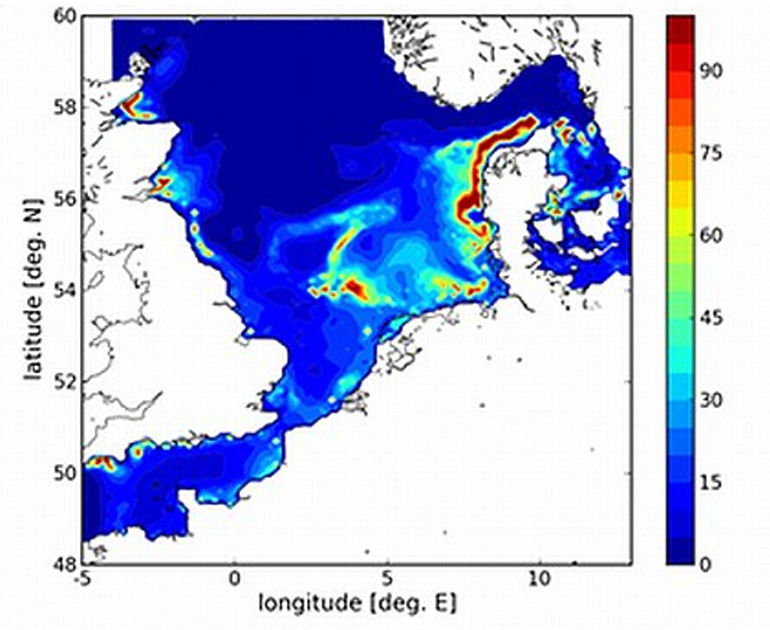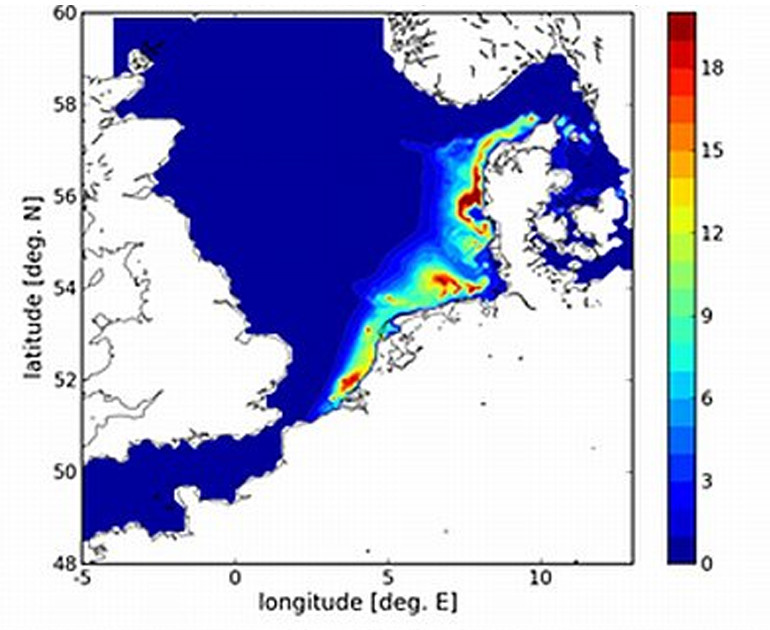Nutrient tracking in sediments

Yearly average (1982) of N in sediment (mmol N m-2 )
Distribution of N in coastal area
The distribution of particulate N in the sediment as it is now in the model, is mainly controlled by the suspension feeders. The reason is that in the absence of a particulate matter transport model, we can model only net sedimentation. The suspension feeders filter detritus particles and phytoplankton cells out of the water column and put a part (20%) of the excretion products into the sediment. According to the model large sedimentation takes place in this way near the Northern point of Jutland (Denmark), but also in the Oyster grounds and in the German Bight. A number of these areas (e.g. Oyster grounds) are known temporary sedimentation areas. In reality these areas are ‘cleaned’ sometimes during a heavy storm when all small detritus particles are resuspended. These fine detrital particles are transported to the Skagerrak and settle there.

Yearly average (1982) of N in sediment originating from Rhine and Meuse (mmol N m-2 )
The tracked N, originating from the river Meuse and Rhine are sedimentated along the continental coast, and much less in offshore areas such as the Oyster grounds (80 km North of the Netherlands) .